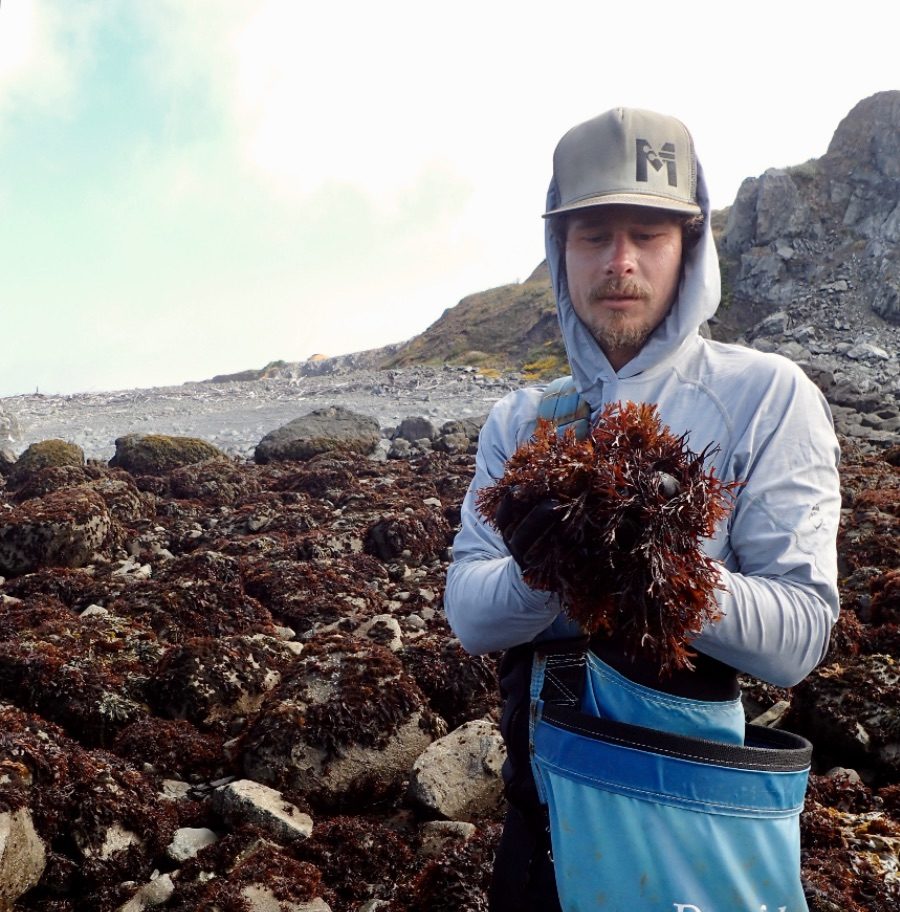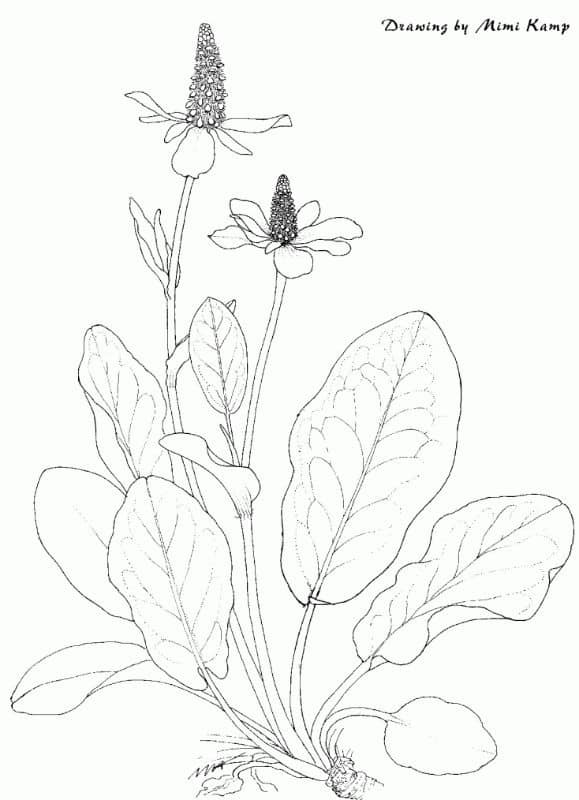This article is part of a 3-part series on medicinal mushrooms.
Read Part 2
Read Part 3
Part 1:
An Introduction to Medicinal Mushrooms
Did you know that there are about 14,000 identified species of mushrooms in the world? And that this is probably only a fraction of the number of unknown species out there? Many of these species of mushrooms are edible… and many are definitely not!
Some mushroom species are particularly useful for promoting health and preventing disease. These are “medicinal mushrooms”.
What are mushrooms anyway? A mushroom is the reproductive “fruiting body” of a fungus, which is usually the only part that we can see. However, the main part of the fungus, known as the mycelium, lives a hidden life in the soil or inside a tree. Mycelium consists of a web of tiny, fast-growing filaments called hyphae.
Fungi play a major role in breaking down organic matter and recycling nutrients, especially in forest ecosystems. Many fungi have complex symbiotic relationships with living trees; tree roots provide sugars to the fungi, and the fungi feed the tree roots other nutrients in return.
What are Polypore fungi? Commonly known as shelf fungi, bracket fungi, or conks, Polypore fruiting bodies are usually tough or woody, and they have pores instead of gills on the underside for producing spores. Most Polypore species grow in living trees, dead trees, or woody debris.
Many valuable medicinal mushroom species are in the Polypore family. We harvest and sell seven different species of wild medicinal Polypore fungi. Five of these are in our Medicinal Mushroom Mix.
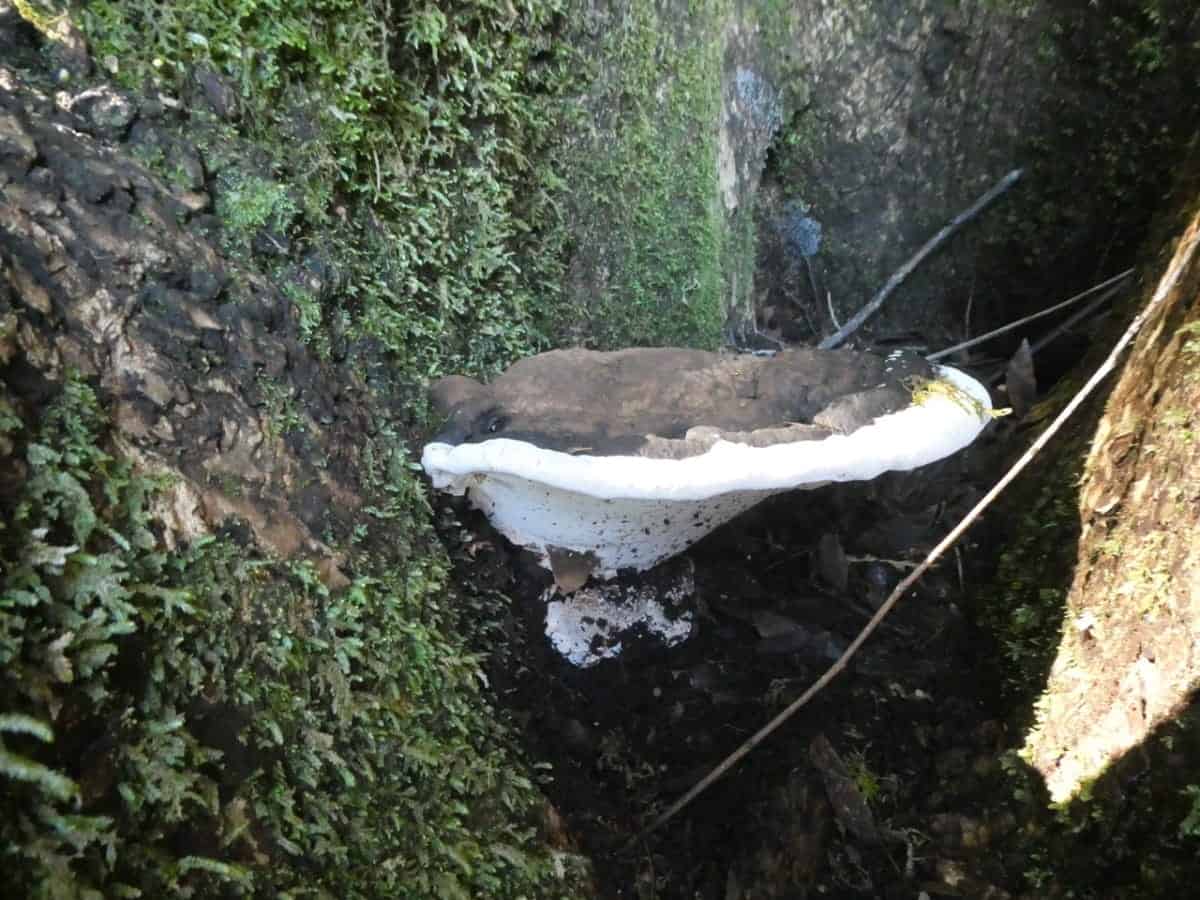
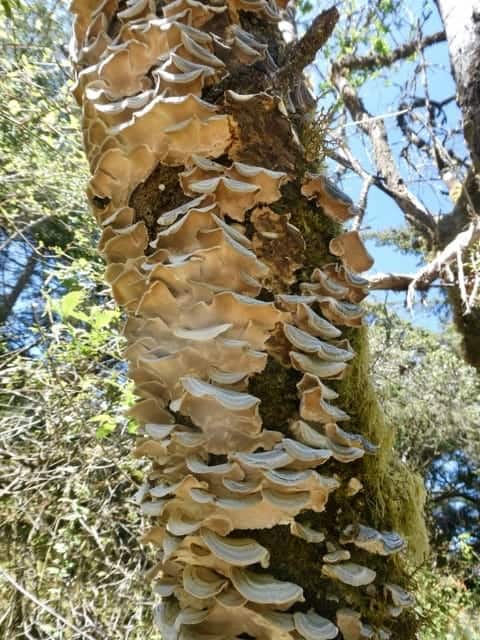
What is the history of using medicinal mushrooms?
Medicinal mushrooms have been prized as health and longevity tonics for thousands of years in China and many other Asian cultures. According to traditional Chinese Medicine (TCM), medicinal mushrooms are strengthening to the body’s natural defenses and healing mechanisms, and can slow ageing, increase general well-being, and prevent disease. Medicinal mushrooms are also used to treat cancers, many cardiovascular diseases, diabetes, and bacterial and viral infections.
Many traditional uses of medicinal mushrooms are well supported by scientific research. As a result, the therapeutic value of medicinal mushrooms is becoming widely recognized in the western world.
What has modern research taught us about the health benefits of medicinal mushrooms?
Many medicinal mushroom species have been studied extensively. The primary bioactive compounds in medicinal mushrooms are polysaccharides (especially beta-D-glucans), triterpenoids and polyphenols.
These compounds have been shown to possess immune-modulating, anti-allergic, anti-cancer, anti-tumor, anti-oxidant, cholesterol-lowering, anti-atherosclerosis, anti-hypertension, anti-diabetic, anti-dementia, anti-Alzheimer’s, anti-viral, anti-herpetic, anti-HIV, anti-microbial, chemo-protective and liver-protective effects.
What does “immune-modulating” mean?
Immune modulators could be described as “immune system tonics”. They enable our immune system to more quickly and effectively fight infections, cancer cells, etc. when needed.
At the same time, immune modulators help tone down over-reactive immune systems and reduce excessive inflammation, allergies, and autoimmune conditions, such as hay fever, eczema, asthma, rheumatoid arthritis, lupus, ulcerative colitis, interstitial cystitis, and autoimmune thyroid diseases such as Hashimoto’s Thyroiditis and Grave’s Disease.
Conclusion
Modern research confirms what the Chinese and many other Asian cultures have known for millenia: that using medicinal mushrooms regularly promotes health and longevity and prevents disease.
READ PART 2
Bring the Power of Oregon's Wild Medicinal Mushrooms Into Your Kitchen
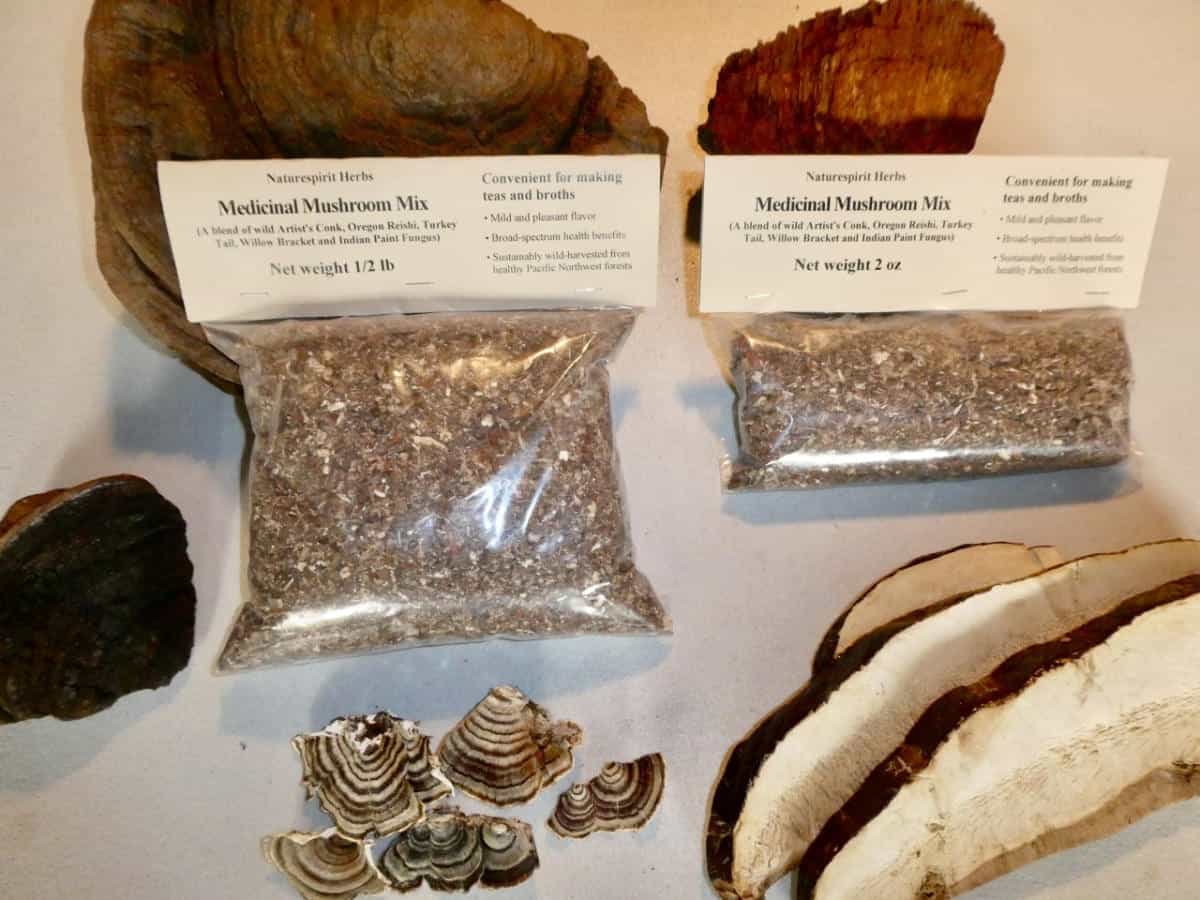
Wild Medicinal Mushroom Mix
A blend of five different wild medicinal Poplypore fungi, which we have sustainably harvested from healthy Pacific Northwest forests, carefully dried, and finely shredded.
Great for making teas and broths.
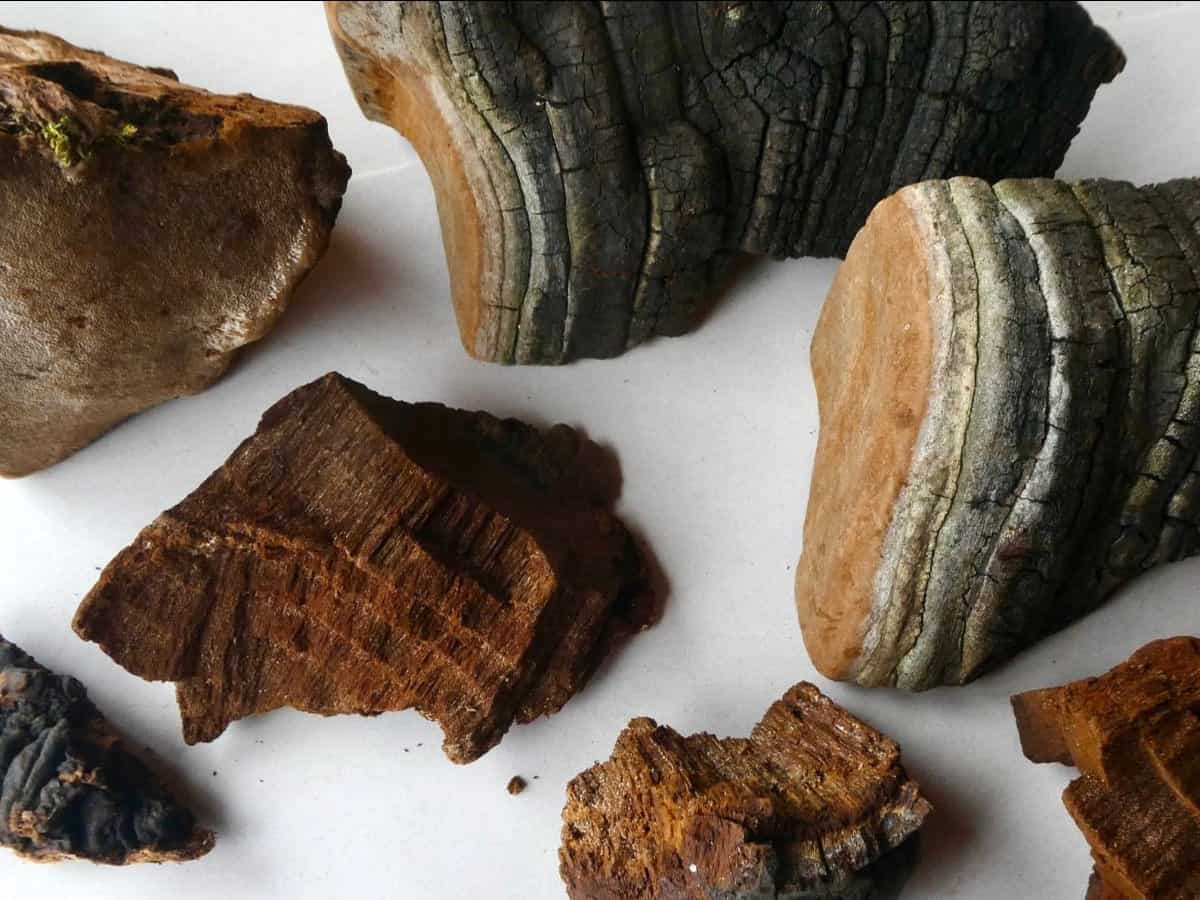
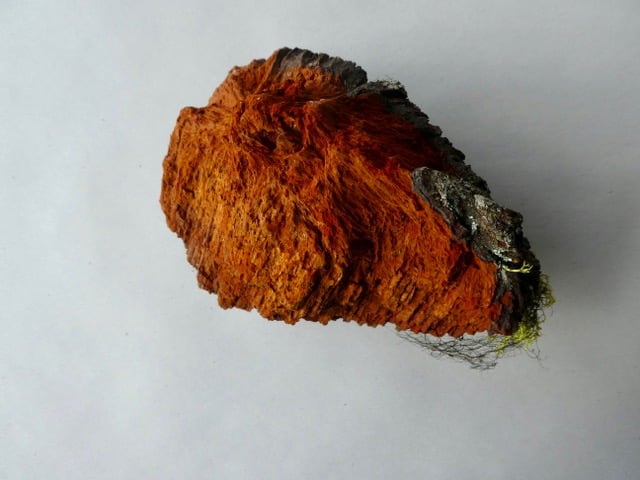
References
De Silva, D.D., Rapior, S., Sudarman, E. et al. Bioactive metabolites from macrofungi: ethnopharmacology, biological activities and chemistry. Fungal Diversity 62, 1–40 (2013).
Grienke, Ulrike & Zöll, Margit & Peintner, Ursula & Rollinger, Judith. (2014). European medicinal polypores – A modern view on traditional uses. Journal of Ethnopharmacology. 10.1016/j.jep.2014.04.030.
Javed S, Li WM, Zeb M, Yaqoob A, Tackaberry LE, Massicotte HB, Egger KN, Cheung PCK, Payne GW, Lee CH. Anti-Inflammatory Activity of the Wild Mushroom, Echinodontium tinctorium, in RAW264.7 Macrophage Cells and Mouse Microcirculation. Molecules. 2019 Sep 27;24(19):3509. doi: 10.3390/molecules24193509. PMID: 31569655; PMCID: PMC6804242.
Sanodiya BS, Thakur GS, Baghel RK, Prasad GB, Bisen PS. Ganoderma lucidum: a potent pharmacological macrofungus. Curr Pharm Biotechnol. 2009 Dec;10(8):717-42. doi: 10.2174/138920109789978757. PMID: 19939212.
Teplyakova, Tamara & Kosogova, Tatiana. (2015). Fungal Bioactive Compounds with Antiviral Effect Tamara Teplyakova. Journal of Pharmacy and Pharmacology. 3. 10.17265/2328-2150/2015.08.001.
Zapora E, Wolkowycki M, Bakier S, Zjawiony JK. Phellinus igniarius: A Pharmacologically Active Polypore Mushroom. Natural Product Communications. July 2016. doi:10.1177/1934578X1601100741.
Zeb M, Lee CH. Medicinal Properties and Bioactive Compounds from Wild Mushrooms Native to North America. Molecules. 2021 Jan 6;26(2):251. doi: 10.3390/molecules26020251. PMID: 33419035; PMCID: PMC7825331.


